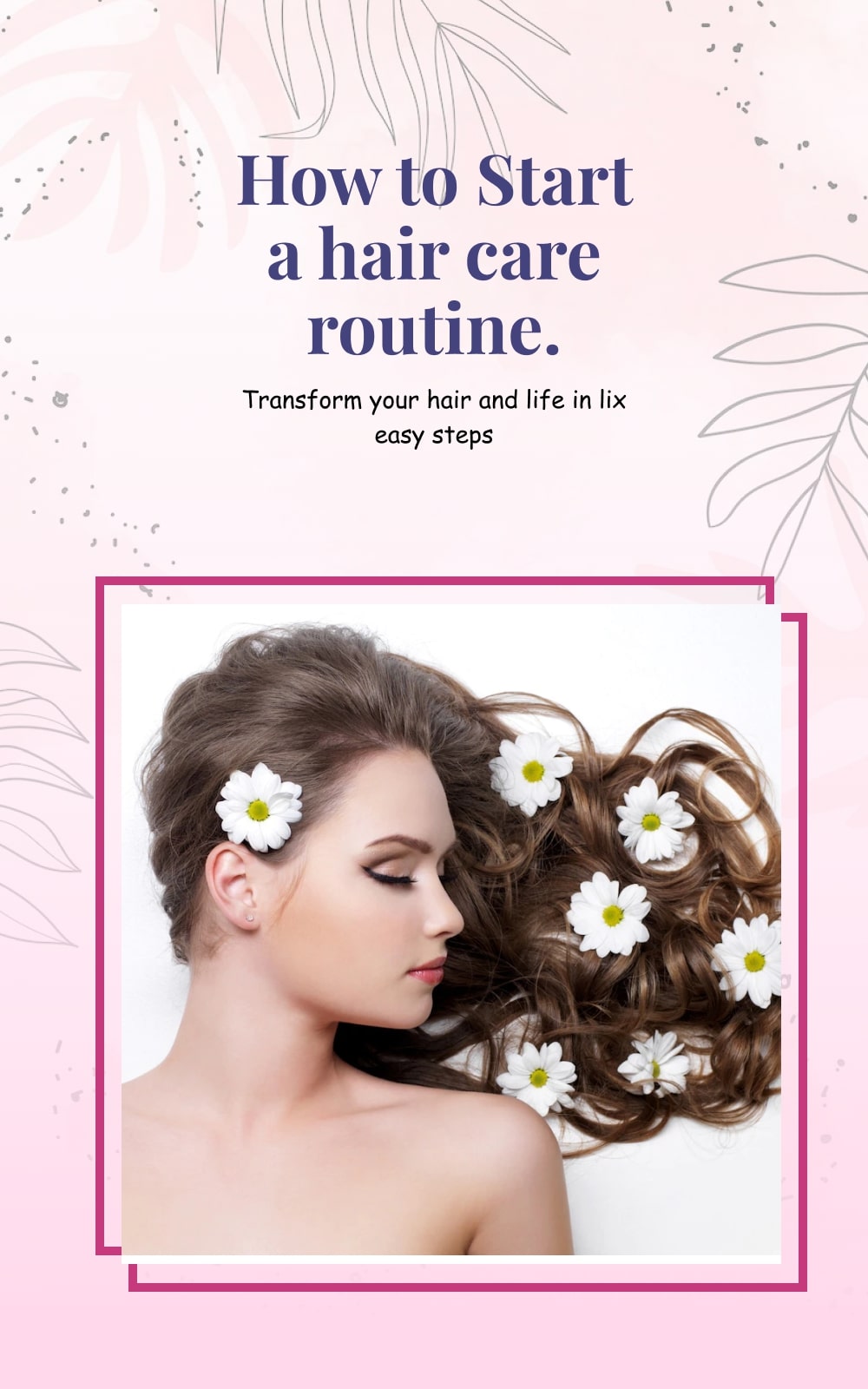Developing a hair care routine entails more than just how frequently you wash your hair.
While the pillars of a hair care routine are a wash, dry, and style, there are numerous other things to consider for the healthier, thickest, and prettiest hair. Although you don’t need a slew of products and tools to achieve the look you want, hair care essentials go beyond shampoo and conditioner. Follow these steps to realize your hair care goals;
Step 1: Get To Know Your Hair Type.
Hair type isn’t just with regards to surface. Likewise, there are factors such as how well your hair assimilates dampness or, regardless of whether it breaks effectively, that decide your hair type. We list the four essential elements underneath to assist with determining if you have thick, fine, coarse, fuzzy, or sleek hair.
Diameter
Do a basic strand test. Take one hair strand between your fingertips; if you feel nothing, this indicates fine hair. Assuming you, in all actuality, do feel the single strand, your hair is of medium width, and if it feels thick or finished, your hair is possibly coarse.
Thickness
Hair thickness alludes to how much hair you have. To decide your hair thickness, take a small bunch of hair from the front of your head and tenderly force it aside. Assuming a ton of your scalp is apparent between the bundle of hair you pulled, you have thin tresses; if you can scarcely see your scalp by any stretch of the imagination, your hair’s thickness is thick. Anything in the middle is medium thickness.
Porosity
This is your hair’s capacity to assimilate dampness and item. To decide your hair’s porosity, fill a bowl with water and spot a solitary strand of hair in the bowl. Assuming your strand sinks to the base, it has high porosity and retains all the dampness. Assuming your strand stays underneath yet drifts, your hair is even and is of “ordinary” porosity. High porosity generally is a consequence of harm, fuzzy, or dry hair. Low porosity can once in a while feel sleek as it will take a ton of item in however may not disperse it appropriately.
Surface/Thickness
This current one’s simple, is your hair straight, wavy, or wavy? Deciding your hair type is simpler than your dating type – particularly because we made this hair type test. Realizing your hair type will assist you with figuring out which items you want the most and how to fabricate your hair care routine to address every one of your issues.
It’s essential to remember that hair changes with seasons, for instance, you might observe your hair more fuzzy or wavy in sticky and warm climates or that your hair is less permeable in colder months. Slight changes might be expected to your daily schedule yet you shouldn’t lose your game.
Step 2: Choose the Right Hair Products
While the kind of required items will rely upon your hair needs, there are a couple of absolute necessities for any hair care schedule:
- Cleanser and conditioner gave hair type (we can assist you with limiting it down here)
- Microfiber towel
- A decent quality hairdryer with movable heat
- A diffuser for our wavy hair young ladies
- Heat protectant splash or cream
- Styling item (splash, gel, mousse, and so on)
- Paddle brushes – these are incredible for the most part all hair types.
Step 3: Decide When to Wash your Hair
Numerous people acknowledge that they need to wash their hair step by step, however, in truth, most hair types simply need to wash their hair every single other day or multiple times every week. Depending upon your hair type, wash your hair when it’s messy, not scarcely routinely. All things considered, people with fine, straight hair need to wash more habitually than people with thick, wavy, or wavy hair.
In case you have dry hair, you should simply wash it every third day. If your hair is a more oily side, have a go at washing it every other day, but accepting it looks smooth after just 1 day, you can wash it reliably. You can similarly use a blow dry between washes to assist with dispersing a part of the oil.
Accepting you have normal hair (not dry and not smooth) you should wash your hair every single other day or as expected. There is no ideal condition for the sum you should wash your hair. Screen your hair and wash it when you feel it’s getting foul. Washing it a great deal will hold the skin oils back from building up in your hair, which can hurt your hair.
How To Properly Use Shampoo And Conditioner
Regardless, conditioner should constantly be utilized in your hair wash schedule. Conditioner assists with feeding and treating your hair after cleanser. It’s critical to apply conditioner to the mid-shaft of the hair to the closures kneading the item into the hair and relying upon the sort of conditioner, leaving it in for a couple of moments before flushing. The mid-shaft and finishes generally need the most dampness, particularly assuming you have synthetically treated hair, dry hair, or harmed closes.
Step 4: Drying and styling your hair
Since washing is far out of way, what about drying? Absorb an abundance of water with a microfiber towel and try not to rub your hair between non-microfiber towels.
If utilizing a hairdryer or diffuser, apply the hair protectant first and dry appropriately. An oar brush or adjust brush can be utilized if attempting to style the hair.
On the off chance that you have time or will relax around the house, apply a spritz of styling items and permit your hair to air dry. Restricting your hair’s openness to warm however much as could reasonably be expected will assist with safeguarding its wellbeing and trustworthiness of it.
If utilizing a level iron or a twisting wand, contingent upon the style, you need to do as such after the hairdryer. Heat protectant ought to be applied, and relying upon the porosity of your hair, use styling item when to set the style. If you need waves or twists to remain for the time being, freely pin them around your head so you’re prepared in the first part of the day.
Step 5: Know when to Trim your hair
Regularly individuals accept that successive trimming should be an inseparable piece of your hair care routine since it assists them with growing a thicker mop of hair and that too at a quicker rate. In any case, specialists say that this is a fantasy. Hair develops from the roots, not the ends. So quit regularly visiting the parlor just to manage your hair, accepting that those cuts and trims will prompt a quicker development and result in more voluminous hair.
Hair development can be weakened by a few factors, for example, medical problems or an absence of supplements like protein, Vitamin B complex, and zinc. However, prudent managing can forestall split closures. As such, your hair needs managing when there’s harm toward the end – assuming hair breaks or again if there are divided finishes; managing can be a simple arrangement. How frequently you need to manage your hair will likewise rely upon your hair objectives. To wear your hair short, you want to manage it to keep up with style each six to about two months.
Step 6: Get to Know the Best Food for Hair Growth.
Your hair care routine is deficient if your dinners don’t contain the food sources that are fundamental for your hair wellbeing. For example, certain supplements like protein, Vitamin B12, biotin, Omega 3 unsaturated fats, iron, and Vitamin E are great for advancing hair development. In this way, counsel a dietitian first and afterward select an eating regimen that contains eggs (protein and biotin), verdant vegetables (iron), nuts, and seeds (Omega 3 unsaturated fats, avocado (Vitamin E), and entire grains and meat (Vitamin B). This is anything but a thorough rundown of the best food varieties for hair development. Counsel a dietitian for additional choices.





